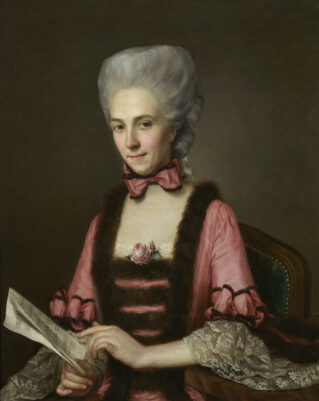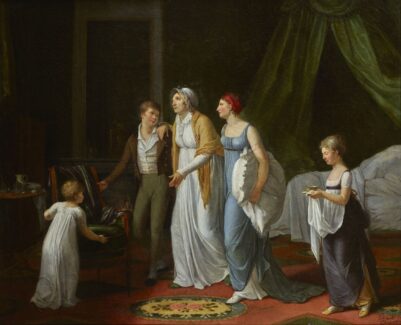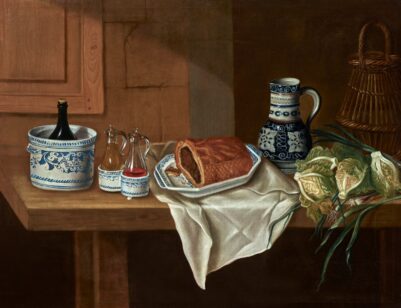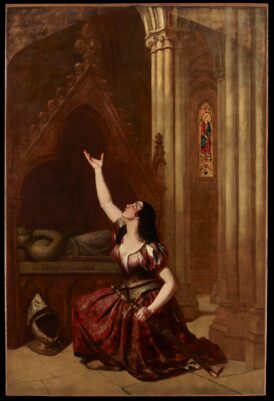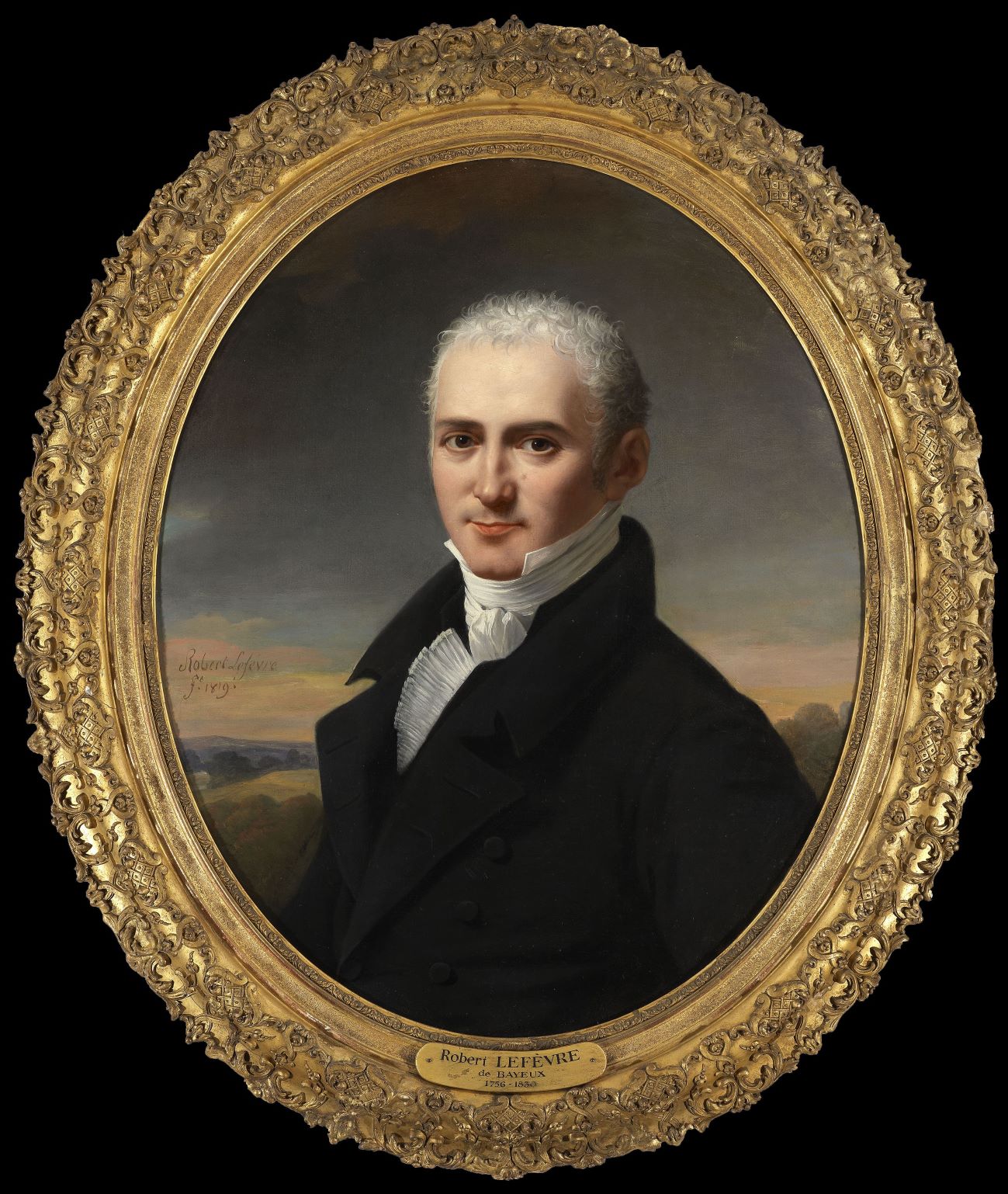
Robert Lefèvre
Portrait d’homme en buste dans un paysage dans un ovale peint
Provenance:
Private collection.
Sale, Tajan, Paris, 15 June 2016, lot 77, when acquired by the present owner.
Catalogue Entry
Defined by his contemporaries as ‘the French Van Dyck,’ Robert Jacques François Faust Lefèvre – better known as Robert Lefèvre – was one of the most sought-after portraitists in Paris during the Napoleonic era and the Bourbon Restoration. In accordance with his father’s ambitions, Lefèvre started off his career as a law clerk for a prosecuting attorney in Caen. After dedicating himself to drawing as a self-taught artist, he eventually decided to become a painter, building a reputation for himself in the Normandy area. He eventually moved to Paris in 1784, when he entered the workshop of Jean Baptise Regnault (1754–1829), painter to the king. In 1791, Lefèvre started exhibiting mythological scenes at the Salon, but soon turned to portraiture. He became particularly prolific in this genre after encountering the favour of Vivant Denon, General Director of the Muséum central des arts – soon to be renamed Musée du Louvre – who helped him to become the official portraitist of the Imperial family. Lefèvre portrayed the most prominent individuals of his time, including Denon himself, Pope Pius VII, Princess Maria Letizia Bonaparte, Paulina Bonaparte and the Emperor. He was required to produce thirty-seven replicas of his Portrait de Napoleon en costume imperial to be sent to foreign countries, and to be given to the French municipalities and dignitaries. After the fall of Napoleon and after exhibiting his Portrait de Louis XVIII at the Salon in November 1814, Lefèvre was nominated first painter to the King.1

Fig. 1. Robert Lefèvre, Portrait du peintre Pierre Narcisse Guérin, oil on canvas, 125 x 96 x 11 cm., 1801, Musée des Beaux-Arts, Orléans.
In addition to executing portraits of all members of the royal family, Lefèvre also portrayed eminent figures of the French and European high society, who often visited his prolific studio. The man depicted in the present work might have been one of them. Captured half-length in three quarter pose, he looks straight at the viewer. His short, curly hair, progressively turning from black to white, along with the slight wrinkles encircling the lower section of the eyes suggest the man to be probably in his mid- or late thirties. The figure appears before a landscape at sunset. The artist’s signature stands out on the left against the rosy sky: ‘Robert Lefèvre ft (fecit) 1819,’ suggesting the painting’s year of execution.

Fig. 2. Statue of Emperor Titus, marble, 79—81 CE., National Archaeological Museum, Naples.
The identity of the sitter remains unknown. The lack of attributes does not allow to identify his social role or profession. His attire, however, suggests he is a well-educated, elegant individual. He has been immortalised by the artist while wearing what seems to be an exquisitely tailored frock coat, a type of coat characterised by full skirts overlapping at the centre front. An example can be seen in one of Lefèvre’s most famous portraits, the Portrait du peintre Pierre Narcisse Guérin (Musée des Beaux-Arts, Orléans, Fig. 1). Originally worn during sporting activities, by the time the present work was executed, the frock coat had become commonly accepted for day wear in France. The model worn by the sitter is double breasted and buttoned to the waist-level. Its frontal, deep V cut reveals an immaculate shirt with a high collar and a precisely pressed cravat, wound tightly around the man’s neck. The tall collar points reach above the chin instead of being pressed down – as was customary for conservative men – suggesting the sitter to sympathise with dandyism, a way of dressing and behaving elegantly that followed the dictat of Beau Brummell.2 The fact that dandies were often self-created man of consciously designed personalities might suggest the sitter to be one of Paris’ nouveau-riches, who aped the aristocracy. The man’s haircut further proves that he was updated on the latest fashion trends. By the end of the eighteenth century, gentlemen’s haircuts got rid of pomaded wigs to lead the way to less elaborate hairstyles, inspired by those of classical antiquity. The sitter shows a fashionable coiffure à la Titus, a short and choppy cut with curls combed forward onto the forehead to resemble the Roman Emperor Titus (Fig. 2). Perfumed pomades were used to define curls and create a tousled effect, which Lefèvre masterfully rendered through semi-circular, fast brushstrokes.
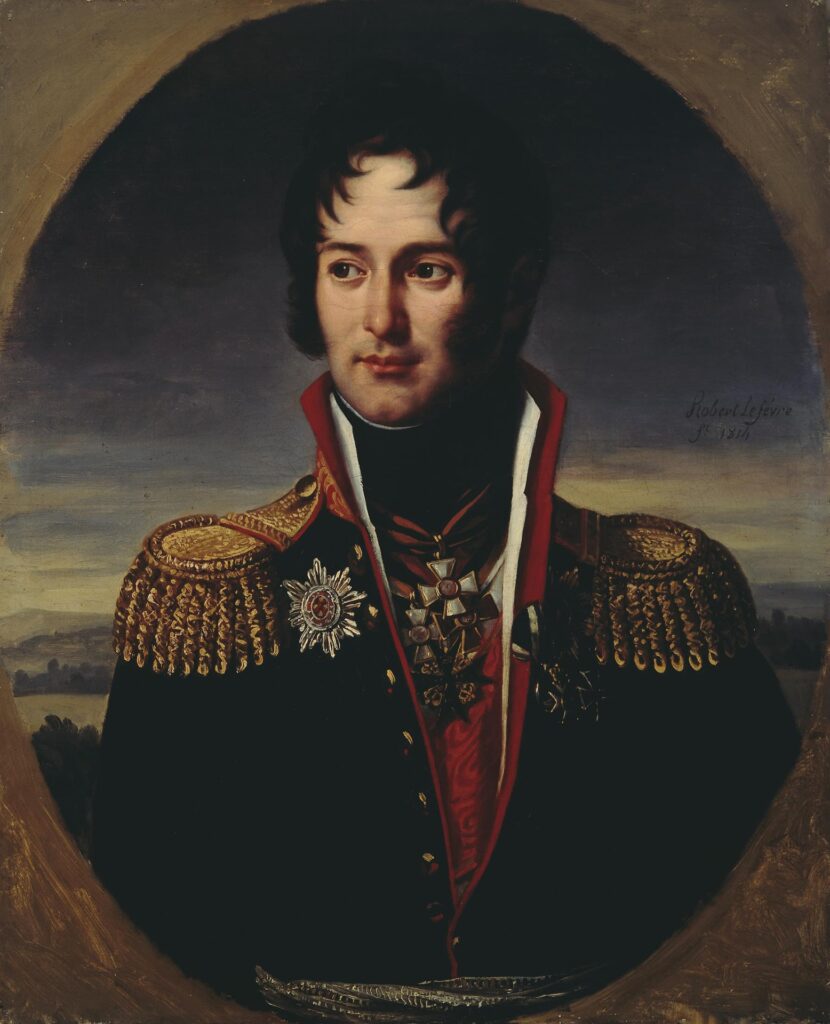
Fig. 3. Robert Lefèvre, Portrait of General Piotr Chicherin, oil on canvas, 73 x 60 cm., 1814, The State Hermitage Museum, St Petersburg.
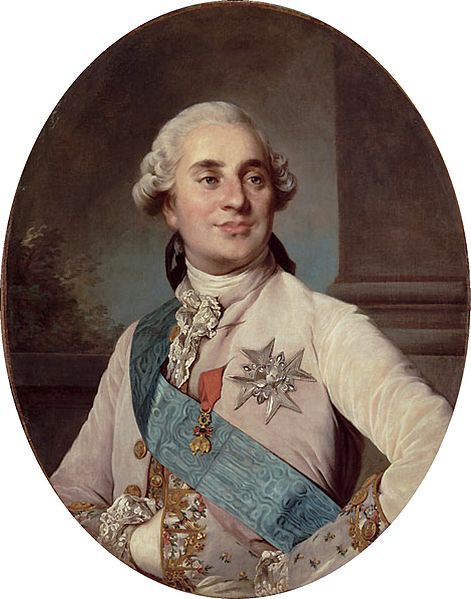
Fig. 4. Joseph Duplessis, Portrait of Louis XVI, oil on canvas, 80 x 62 cm, c. 1774-1775, Château de Versailles, Versailles.
In the present work, Lefèvre has combined inherited traditions with elements of novelty, as was distinctive of portraiture at the time.3 A reference to pre-Revolutionary portraiture is suggested by compositional choices: the sitter’s three-quarter pose and a background framing rather than competing with the figure. Such visual elements reappear in Lefèvre’s Portrait of General Piotr Chicherin from 1814, today at The State Hermitage Museum (Fig. 3). The two paintings share a similar landscape conforming to the tradition of the paysage historique, with changing atmospheric effects reminiscent of those of Italianate Northern landscapes. Both sitters are framed within an oval. Tracing its origins to the Renaissance, such a format had become very popular in aristocratic French portraiture during the eighteenth century, being often used in portraits of the royal family (Fig. 4) and the noble class. Artists such as Jacques-Louis David and Ingres still used oval canvases on a few occasions at the turn of the nineteenth century. A comparison with Ingres’ Portrait d’Edme Bochet (Fig. 5), today in the Musée du Louvre with its pendant depicting Bochet’s sister (Fig. 6), leads one to hypothesize that the Portrait might have originally been accompanied by a now lost female portrait.
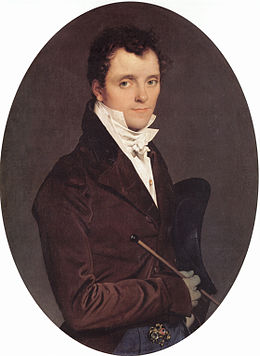
Fig. 5. Jean-Auguste-Dominique Ingres, Portrait d’Edme Bochet, oil on canvas, 93 x 69 cm, 1811, Musée du Louvre, Paris.
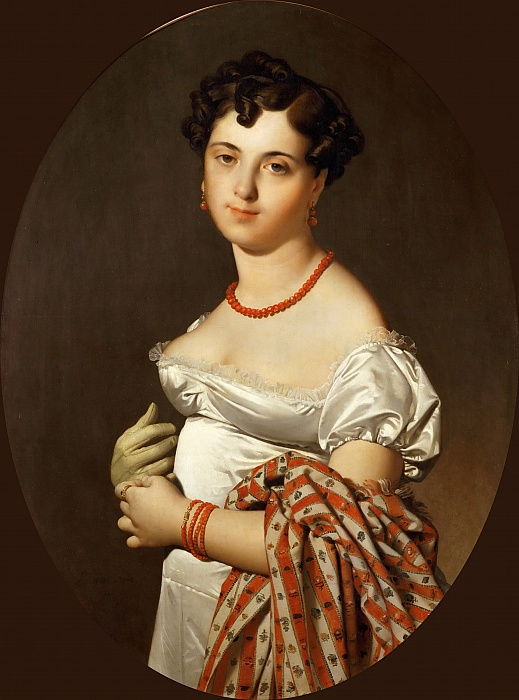
Fig. 6. Jean-Auguste-Dominique Ingres, Portrait de Madame Cécile Panckoucke, née Bochet, oil on canvas, 90 x 71 cm, 1811, Musée du Louvre, Paris.
Elements of novelty are to be found in the rendering of the figure’s facial expression. Lefèvre’s portraits are renowned for their verisimilitude, a quality that the present work exemplifies. Whether the Portrait was painted from life or from memory – Lefèvre was known to have a prodigious visual memory – the artist seems to have paid great attention to the sitter’s likeness. This is suggested by the details of his greying hair and eye bags, of his high forehead, cleft chin, and recently shaved moustaches, as well as of the mole on his left cheek. When working both inside and outside the domain of official portraiture, Lefèvre reserved particular attention to the psychological aspect of the image. As he did in one of his portraits of Napoleon (Fig. 7), in the present work the artist has pushed the figure towards the picture plane, enhancing a sense of physical presence. Similarly to those of the Emperor, the man’s eyes meet the viewer’s gaze with an intense stare that eliminates questions of identity and profession in favour of a confrontation with a distinctively confident human psychology.

Fig. 7. Robert Lefèvre, Portrait of Emperor Napoleon, oil on canvas, 87 x 71.1 cm., 1805, Private collection.
1 For a biography of Robert Lefèvre, see French Painting 1774–1830. The Age of Revolution, (Detroit: Detroit Institute of Art, 1975), pp. 528-529. 2 See Jules Barbey d'Aurevilly, Du Dandysme et de George Brummel, (édition B. Mancel: Caen, 1845). For a study on Beau Brummell, see Cole Hubert, Beau Brummell, (Readers Union, 1978). 3 French Painting 1774–1830, p. 239.
Condition:
The painting is in very good condition. It is original in size and its canvas is unlined. No major damages, repairs or losses of colour are visible.
